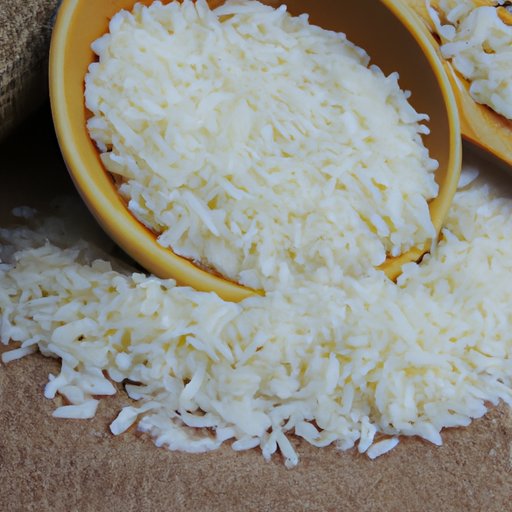Introduction
Rice has been an important part of diets around the world for centuries. It is one of the oldest staples of traditional diets and continues to be a key ingredient in many cultures today. Rice is also a nutrient-dense food that has numerous health benefits when eaten in moderation. In this article, we will explore the health benefits of eating rice, the different types of rice and their nutritional values, how to cook it for maximum nutritional value, and how to incorporate it into a healthy diet.
Overview of the Health Benefits of Eating Rice
Rice is a good source of carbohydrates, which provide energy and fuel to the body. It is also a rich source of several vitamins and minerals, including thiamine (vitamin B1), niacin (vitamin B3), folate (vitamin B9), iron, magnesium, phosphorus, potassium, and zinc. Additionally, some varieties of rice are high in fiber, which helps to promote regular bowel movements and aid digestion. Eating rice can also help to control blood sugar levels and reduce the risk of type 2 diabetes.

Exploring the Types of Rice and Their Nutritional Values
There are many different types of rice, each with its own unique flavor and texture. The most common types are white rice, brown rice, wild rice, jasmine rice, basmati rice, and black rice. White rice is the most commonly consumed type of rice and is typically milled and processed to remove the outer bran layer and germ, resulting in a lighter, fluffier texture. Brown rice is less processed and contains more nutrients than white rice. Wild rice is not actually a type of rice, but rather a type of grass seed. Jasmine rice is a fragrant long-grain variety of rice, while basmati rice is a nutty-flavored long-grain variety. Black rice is a chewy, nutty-flavored variety of rice that is high in antioxidants.

How to Cook Rice for Maximum Nutritional Value
Cooking rice correctly is essential for maximizing its nutritional value. Different types of rice require different cooking methods, so it’s important to read the instructions on the packaging carefully. Generally speaking, white rice should be cooked by boiling it in water and then simmering it until all the liquid is absorbed. Brown rice should be cooked by boiling it in a pot of water, reducing the heat, and then simmering it until all the liquid is absorbed. Wild rice should be cooked by bringing it to a boil in a pot of water, reducing the heat, and then simmering it until all the liquid is absorbed. Jasmine and basmati rice should be cooked by rinsing them first, then adding them to a pot of boiling water, reducing the heat, and then simmering them until all the liquid is absorbed. Black rice should be cooked by adding it to a pot of boiling water and then simmering it until all the liquid is absorbed.

The Role of Rice in Traditional Diets Around the World
Rice is an integral part of many traditional diets around the world. In Asia, rice is the staple food and is often served as a side dish or main course. In Europe, rice is used in dishes such as risotto, paella, and pilaf. In South America, rice is served as a side dish or as part of a meal. Rice is also used to make noodles, cakes, and other desserts in various countries around the world.
How to Incorporate Rice into a Healthy Diet
In order to get the most out of the health benefits of eating rice, it is important to incorporate it into a balanced diet. Substituting white rice for brown rice is a great way to add more fiber and nutrients to your meals. Adding vegetables and protein to rice dishes is also a great way to make them more nutritious. Additionally, making rice meals quicker and more delicious by adding herbs and spices can help to make them more enjoyable.
Research-Backed Reasons to Eat More Rice
Eating more rice is beneficial for our health in many ways. Studies have shown that rice is high in fiber, which can help to lower cholesterol levels and reduce the risk of heart disease. It is also low in calories, making it a great choice for those trying to lose weight. Furthermore, rice is rich in vitamins and minerals, including thiamine, niacin, folate, iron, magnesium, phosphorus, potassium, and zinc, which are all essential for optimal health.
Conclusion
In conclusion, rice is a nutritious and versatile food that can be incorporated into a healthy diet. It is high in fiber, low in calories, and rich in vitamins and minerals. Additionally, there are many different types of rice, each with its own unique flavor and nutritional value. By following the tips outlined in this article, you can make sure that you are getting the most out of the health benefits of eating rice. So go ahead and enjoy a delicious bowl of rice today!
(Note: Is this article not meeting your expectations? Do you have knowledge or insights to share? Unlock new opportunities and expand your reach by joining our authors team. Click Registration to join us and share your expertise with our readers.)
